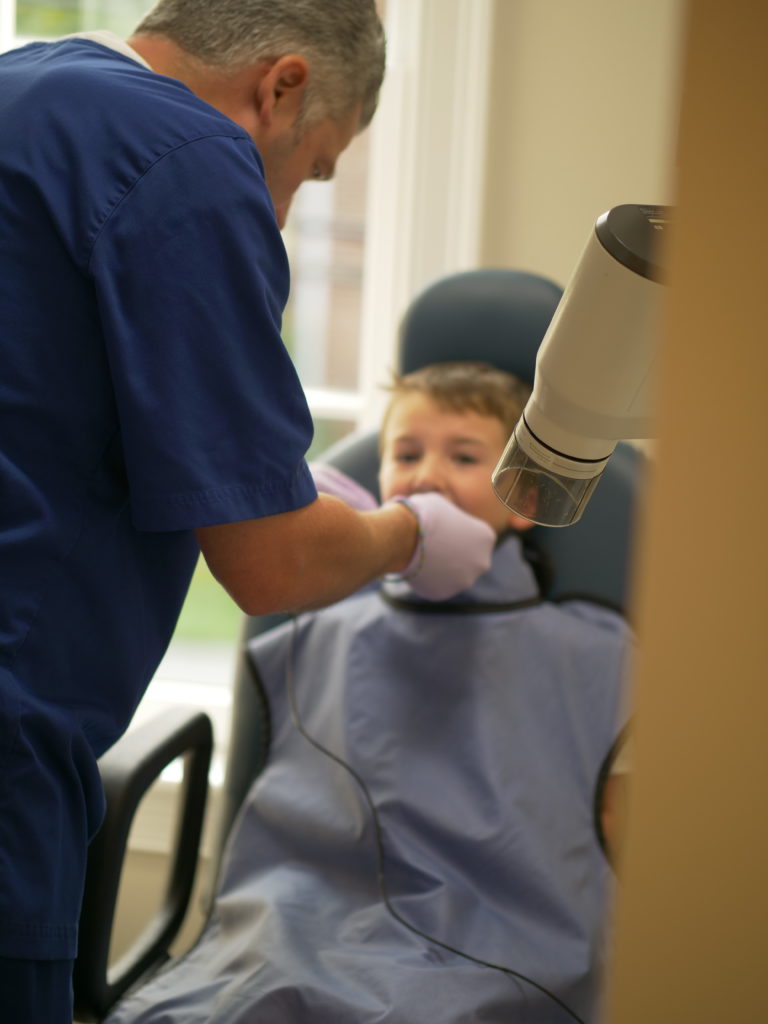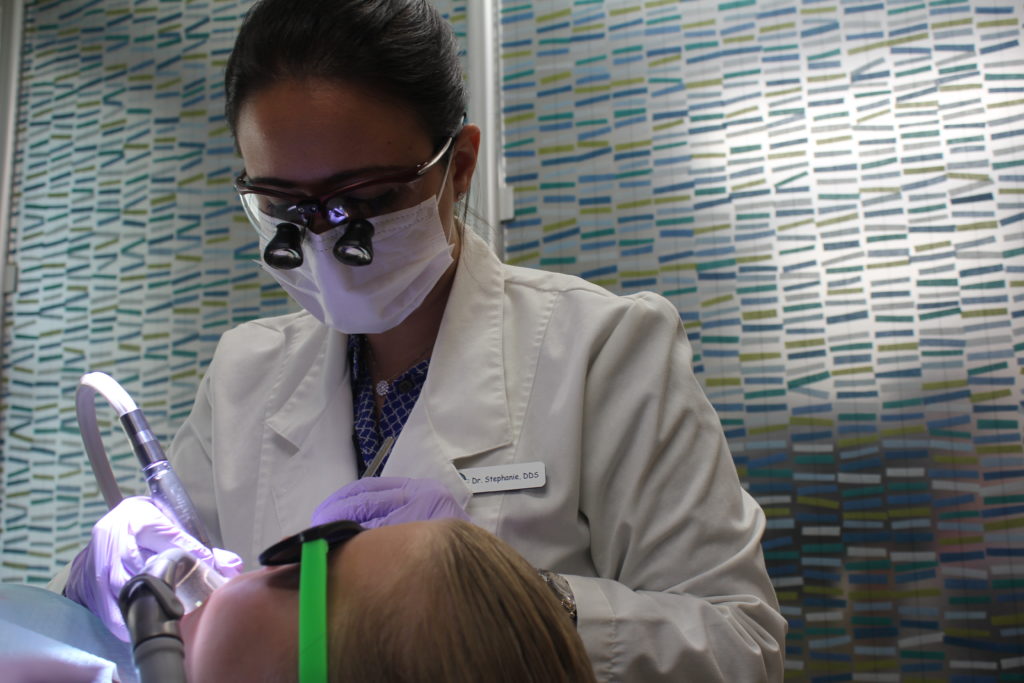For parents who have an older child or teenager, a missing permanent tooth can be a stressful and confusing situation. There are often questions about why this has happened and what can be to done to correct it, but because a child’s jaws continue developing until closer to adulthood, treatment may not always be as simple as replacing a lost permanent tooth or one that has never grown. At Coppe + Sears, we understand how worrying oral issues can be for parents, and want to do all we can to set the minds of our patients and their families at ease. Continue reading below to learn more about what can cause a missing adult tooth, and what we can do in these cases to fully restore a child’s smile.
Hypodontia, or congenitally missing teeth
Although most people will end up with a complete set of thirty-two permanent teeth, sometimes one or more teeth may fail to develop. This hypodontia is one of the most common developmental abnormalities in dentistry, with up to 20% of all adults missing at least one tooth. When children have a congenitally missing baby tooth, there generally will not be a permanent tooth developing in the gums underneath it either. The most common congenitally missing teeth tend to be:
Upper lateral incisors – these are the two teeth that sit on either side of your two front teeth.
Lower central incisors – these are the two front teeth in the lower jaw.
Second premolars – these are the teeth right in front of your molars.
Wisdom teeth – these teeth are the ones all the way in the back of the mouth. So many people have congenitally missing wisdom teeth that were you to take them out of the equation, the percentage of adults with missing teeth would drop from the aforementioned 20% figure down to around 5%.
In most cases of hypodontia, there will only be one or two teeth missing rather than multiple teeth.
What could cause a tooth to be congenitally missing?
Our teeth are formed in our mouths through a complex process requiring many genetic signals being read correctly in order to complete it. Most cases of hypodontia will result from problems arising with the dental lamina, the band of tissue underneath the gums where the tooth begins to form. A number of genetic factors can result in the dental lamina failing to form, though most research points to a mutation occurring in one of three specific genes that play a role in the development of the teeth. If there is a mutation, and the dental lamina is missing as a result of that, it is unlikely that the corresponding tooth will form. Congenitally missing teeth may also be associated with various dental anomalies, such as cleft lip and palate, and genetic conditions, including Down’s Syndrome.
Losing a tooth through an accident or injury
If a baby tooth is lost before it is ready to come out, other surrounding teeth can crowd into the vacant spot. This may not leave enough room for the adult tooth to emerge, causing crooked teeth or impaction of the tooth below the surface. In cases where a baby tooth is lost prematurely, a space maintainer is often used to keep that area of the child’s mouth open until the permanent tooth begins to emerge naturally.
Sometimes older children will lose an adult tooth due to an accident or injury. Occasionally, an experienced dentist like Dr. Coppe or Dr. Karapetian will be able to reattach a permanent tooth that has been knocked out by using a thin plastic or metal wire to splint the lost tooth to the one beside it. By keeping it in place this way for several weeks, the ligaments that join the tooth to the bone will regrow, at which point we can safely remove the splint.
What are the options for correcting the issue of congenitally missing teeth?
Children will typically lose their last baby tooth by around the age of twelve. In most cases, the loss of a baby tooth is quickly followed by the eruption of the new permanent one. Parents may become concerned if a child has lost a primary tooth and its replacement has not appeared within a reasonable amount of time, and wonder what steps, if any, they should take. Because there are so many reasons for a missing permanent tooth, the best way to visualize what is happening is often a thorough set of dental x-rays.

When it comes to a missing permanent tooth, there are typically three options for correction or treatment:
- preserve the primary tooth
- replace the missing tooth
- orthodontically close the space
While these methods are sometimes interchangeable, the best choice for any particular patient will be decided based upon the condition of his or her teeth, bite, the amount of crowding, and a number of other variables. The most appropriate treatment for any child missing a permanent tooth can only be ascertained by an examination with a qualified dentist. At Coppe + Sears, our doctors will examine the alignment of a child’s teeth, the amount of crowding (if any), and the overall bite in order to determine which treatment option should be pursued to improve the functionality of the bite and improve the cosmetic appearance of the smile. Some of these options must be postponed until a child is in their late teens or entering adulthood, but it is important to have any concerns checked out as soon as a problem is suspected.
Dental Implants
A dental implant is sometimes the best solution for missing teeth because of its strength, durability, and cosmetic appeal, but they are a viable treatment option only after a child has completed the growth phase of adolescence (i.e., the jaws are no longer growing). Because every child is different, the only way to be certain this phase has concluded is by working with an experienced dental care provider to determine the right time for placement. Coppe + Sears has four skilled, experienced dentists who can confidently assess if growth has stopped by performing a series of 360-degree cranial x-rays known as cephalometric scans.
Removable retainer with a tooth replacement
A removable retainer with a fake tooth replacement is a simple way to replace a missing tooth, particularly if it is a front tooth that is missing. This common approach to congenitally missing teeth provides stability for the bite as well and some amount of cosmetic appeal. Patients can eat with these appliances in place and they are very comfortable.
Traditional bridge
Unlike a removable retainer, the traditional bridge is not removable, and is fixed directly to the surface of the teeth on each side of the gap. This option may be preferred over removable bridges in certain cases, but they can be a bit more difficult to clean, and will often require the reduction of certain healthy portions of the adjacent teeth depending on the patient’s bite.
Orthodontics
There are a number of ways in which orthodontics can be used with dentistry to help when a child has a missing permanent tooth. For example, orthodontic treatment can create a space in the area where a tooth should have grown in if other teeth have crowded into this space. This type of treatment is used to make the appropriate space for a dental implant. Another option is to close the space where the missing tooth should be positioned, substituting a nearby tooth for the missing one. Dr. Chad Sears is an experienced orthodontist who works side-by-side with our dentists to find the perfect treatment option for any patients who require orthodontic work as well as dental care.

For any dental and orthodontic need, call Coppe + Sears
For children who have lost a tooth due to trauma or are dealing with a suspected case of congenitally missing teeth, Coppe + Sears is fully equipped to handle diagnosing, treating, and creating a fully functional smile that works well and looks attractive. Our team of highly trained and skilled staff provide the best in personalized service to families in Lexington and the surrounding area. For innovative treatment and customized care, get in touch with our office today!
